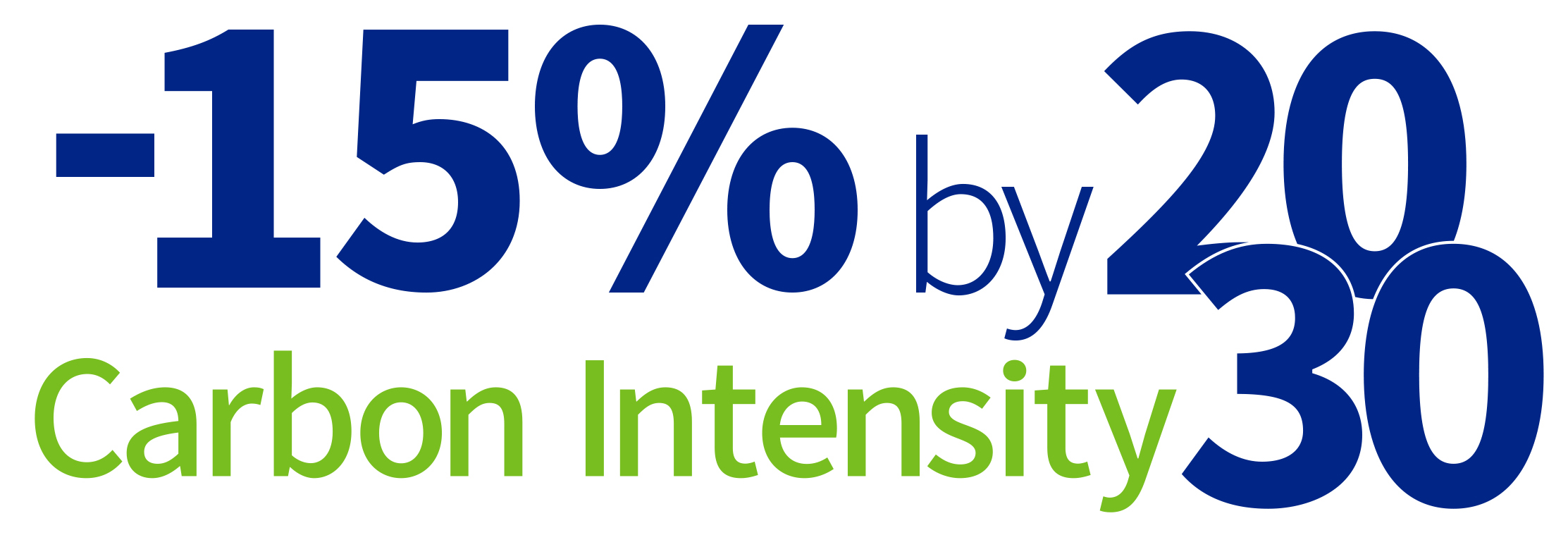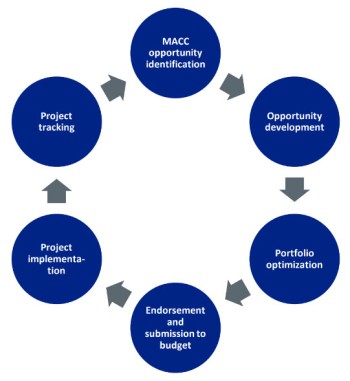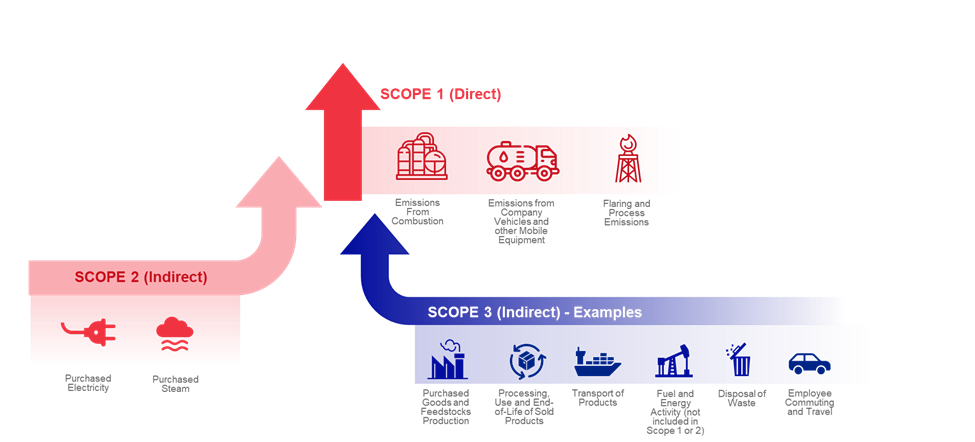Reducing Greenhouse Gas Emissions and Intensity
CPChem understands the significance of climate change and is taking action to support the global transition to a lower carbon future. In 2022, CPChem announced it is working to reduce the carbon intensity of its operations by 15% by 2030, relative to a 2020 baseline.

This target includes reductions in Scope 1 and 2 greenhouse gases (GHGs) at CPChem-operated assets across the globe, as well as Scope 3 reductions from the value chain.
We are leveraging a multi-faceted approach in the pursuit of our climate goal which involves new low-carbon growth projects and procurement of renewable energy.
Marginal Abatement Cost Curve (MACC) Process and Solutions
CPChem’s MACC process leverages ideation and research to develop site-specific emissions reduction and energy efficiency strategies for our existing assets.

The MACC process brings site teams together to compile a comprehensive collection of opportunities to abate emissions. Team members are encouraged to embrace innovation and creativity in pursuit of strategies and optimizations that are intended to make operations more sustainable.
Together, our multi-disciplinary teams have put forth upwards of 800 concepts and ideas covering immediate and long-term solutions for emissions reductions and decarbonization projects. Information and ideas generated from CPChem’s MACC Assessments will play a critical role as the company works to achieve its climate goals.
Addressing Scopes 1, 2 and 3 Emissions

The Greenhouse Gas Protocol provides standards, guidance and resources to help manage and measure climate-warming emissions, which are categorized into three scopes.
Scope 1
Scope 1 emissions are direct emissions from sources owned or controlled by a company like CPChem. The majority of CPChem’s Scope 1 emissions result from the combustion of fuels in ethylene furnaces and steam boilers and from flaring.
CPChem continues to explore cost-effective solutions to increase energy efficiency and reduce its Scope 1 emissions to support its 2030 target.
Scope 2
Scope 2 emissions are indirect emissions associated with purchased energy such as electricity or steam. More than 15% of our total Scope 1 & 2 GHG emissions are derived from the purchase of third-party-generated electricity, and it is the leading source of GHG emissions from our polyethylene assets. We anticipate that our third-party electricity providers will continue to expand their use of renewable energy and natural gas to further reduce the emissions associated with producing grid electricity, alongside our own efforts to procure renewably sourced electricity.
Scope 3
Scope 3 emissions represent indirect emissions not included in the previous categories, generated throughout the value chain, both upstream and downstream.
To measure and reduce the impact of Scope 3 emissions, CPChem is conducting a comprehensive analysis of its value chain and suppliers. Although our Scope 3 emissions data is not yet available, we are actively working to assess these emissions and we intend to publish this data in the future.
We aim to work together with our customers and suppliers to further reduce Scope 3 emissions, and our Responsible Sourcing Program helps us select suppliers who also prioritize these efforts.
Explore our Performance Data to learn more about emissions at CPChem.
Environmental, Financial and Social Data Tool